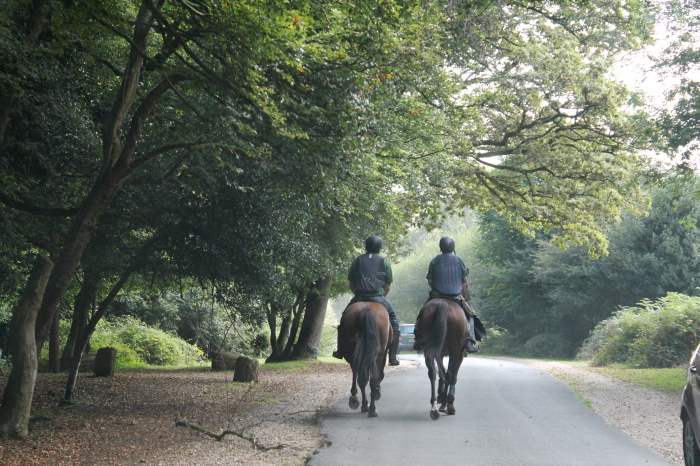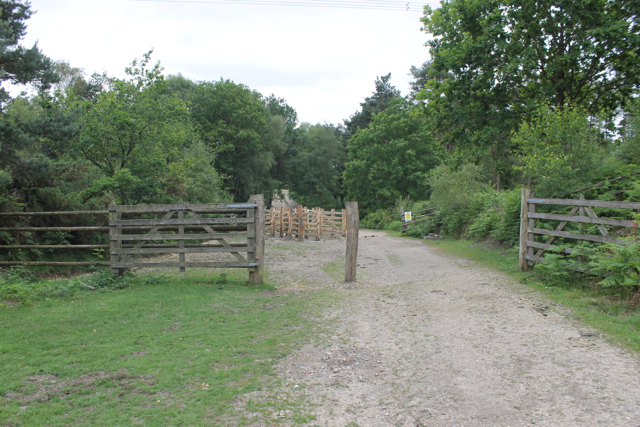On the New Forest ponies are always referred to as ‘colts’ irrespective of whether they are mares or geldings, young or old. Every now and then it becomes necessary for a commoner to catch-up an individual pony or mare with a foal. The reasons may be that the pony is to be trained to be ridden or perhaps the foal is destined for sale and needs prior handing. Colt hunting is the method used to capture such individuals. The pony will be located and rounded-up by mounted riders employing the same tactics as used in the drifts. A group of riders gallop after the pony and channel it towards the pound. A pound is a permanent timber structure, which resembles the corrals one might see in a cowboy film, and there are many situated all over the New Forest. They are used all-year round for colt-hunting and in particularly during the drift season. The pony or mare and foal can be guided into the open pound and then the gates closed behind it.
In the past some commoners would employ a tactic during colt hunting known as ‘tailing’. This ploy, used predominantly on the foals and yearlings, involved a rider galloping alongside the youngster and grabbing its tail thus slowing it down. Then another rider would come alongside and grab its mane. Once the colt was at a standstill the rider, still holding the mane, would jump down and put a halter on it. This method required the rider to be an exceptional horseman and his or her mount needed to be good at its job as a colt hunter. Indeed there are many stories of ponies that were exceptional at rounding up their wild counterparts. Tailing, however, is very dangerous and risks injury to all concerned, not least to the young pony being captured. Only the most experienced commoners would attempt to catch a pony in this way.
Some commoners preferred ‘colt catching’ instead, using concealed ropes to capture the pony, but this practice would require a large amount of patience and intimate knowledge of the terrain. Basically a noose is concealed in bushes and the pony is simply herded through in the hope of catching the neck or forehoof, depending upon where the noose is laid. This method obviously relied upon having gorse bushes readily available! Lassos, like the ones used by North or Latin American cowboys are not used in the New Forest. However one story that I heard was of senior Agister, Ron Ings, who in 1960’s managed to lasso a steer that had evaded all other attempts to capture it. Probably assisted by luck more than his roping skills, he had galloped alongside the beast and managed to get the rope over its head, bringing it to a stop!










You must be logged in to post a comment.